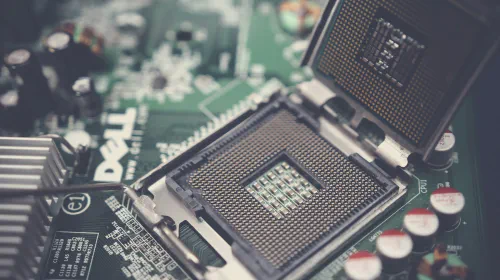IoT Devices: Understanding the Hidden Cybersecurity Threat
Salomon Kisters
Jun 22, 2023This post may contain affiliate links. If you use these links to buy something we may earn a commission. Thanks!
The rise of IoT devices has transformed the way we live and work, introducing endless possibilities and streamlining processes.
However, this convenience comes at a cost, as these devices pose a serious cybersecurity threat. They are often overlooked by individuals and businesses alike, leaving them vulnerable to attacks by cybercriminals. With the proliferation of connected devices, the potential for hackers to exploit these devices has become a serious concern.
From smart home devices to industrial control systems, IoT devices are increasingly being used to facilitate cyberattacks, leading to data breaches, financial losses, and even physical harm.
As the number of IoT devices continues to grow, it is essential that we take cybersecurity seriously and take steps to protect ourselves and our businesses from this hidden threat.
What Are IoT Devices and Why Are They a Threat?
IoT, or Internet of Things, devices refer to everyday objects that are connected to the internet, such as smart thermostats, security cameras, and even cars. These devices typically collect and share data, and in many cases, can be controlled remotely via a mobile device or computer.
While these devices offer convenience and efficiency, they also present a significant cybersecurity risk. Many IoT devices are designed with minimal security features, making them easy targets for hackers. In addition, these devices often have access to sensitive information, such as personal data and financial information, making them attractive targets for cybercriminals.
Hackers use a variety of techniques to exploit IoT devices, ranging from simple brute-force attacks to more sophisticated methods, such as malware and phishing. Once a device has been compromised, it can be used as a gateway to access other devices on the same network, potentially leading to widespread data breaches and other security incidents.
Given the widespread adoption of IoT devices in both personal and business settings, it is essential that we take steps to protect ourselves and our networks from these hidden threats. This may include regularly updating devices with the latest security patches, using strong passwords, and implementing network-level security measures.
Examples of Cyberattacks on IoT Devices
One of the most notorious cyberattacks on IoT devices was the “Mirai botnet” in 2016. Hackers were able to infect and manipulate over 600,000 IoT devices, such as cameras and routers, and used them to launch a massive Distributed Denial of Service (DDoS) attack on the DNS provider Dyn. This attack caused widespread internet disruption and affected major websites like Twitter, Spotify, and Reddit.
In 2017, a security researcher discovered a vulnerability in a popular children’s smartwatch, which allowed anyone to track and listen in on conversations between the child and the watch. This vulnerability was caused by a lack of encryption on the data transmitted between the watch and the server, leaving sensitive information open to interception.
Another example of IoT cyberattacks was the “LockerGoga” ransomware attack in 2019, which targeted industrial control systems in a variety of industries, including manufacturing and energy. This malware exploited vulnerabilities in IoT devices to gain access to these systems and encrypt sensitive data, demanding payment for decryption.
These incidents are just a few examples of the potential dangers posed by IoT devices, highlighting the need for increased awareness and security measures to protect against cyberattacks.
Common Vulnerabilities of IoT Devices
IoT devices are vulnerable to a wide range of cyber-attacks due to their lack of security measures. Here are some common vulnerabilities that leave IoT devices open to attack:
Default Passwords
Many IoT devices come with default usernames and passwords, making them easy targets for hackers. Always change the default username and password to a unique combination that is strong and difficult to guess.
Lack of Firmware Updates
Firmware updates are essential to patch security vulnerabilities in IoT devices. However, many manufacturers fail to provide regular updates or make it difficult for users to install them. Always keep your devices up-to-date with the latest firmware to ensure they remain secure.
Lack of Encryption
IoT devices transmit data over the internet, and without proper encryption, this data can easily be intercepted by hackers. Always use devices that support strong encryption, such as WPA2 and HTTPS.
Weak Authentication
Poor authentication mechanisms make it easy for hackers to access IoT devices. Always use two-factor authentication where available, and create strong passwords to protect against brute-force attacks.
Lack of Physical Security
IoT devices are often left exposed, making them easy targets for physical attacks. Always keep your devices in a secure location, and avoid connecting them to public networks.
The Role of Manufacturers in IoT Device Security
Manufacturers play a critical role in ensuring the security of IoT devices. While users have a responsibility to keep their devices updated and secure, manufacturers must provide devices with robust security measures built-in from the start.
Firstly, manufacturers must prioritize security in the design and development of IoT devices. This includes implementing secure hardware and software components and including features such as encryption and two-factor authentication.
Manufacturers must also provide ongoing support and updates to their devices. This includes regular firmware updates that patch security vulnerabilities and address emerging threats. Updates should be user-friendly and easy to install to encourage users to keep their devices secure.
Furthermore, manufacturers should adopt industry best practices for secure coding and testing. This includes conducting regular security audits and penetration testing to identify and address vulnerabilities before they can be exploited by hackers.
Finally, manufacturers must be transparent about their security practices and provide clear information about the security features of their devices to users. This includes providing clear instructions on how to set up and manage security features, as well as information about potential risks and threats.
Conclusion
As we have seen, IoT devices can offer many benefits in our daily lives. However, with those benefits come significant cybersecurity risks. It is important for individuals and businesses alike to understand these risks and take steps to mitigate them.
By remaining vigilant and implementing strong security practices, we can help ensure that our IoT devices are not used as entry points for cybercriminals. This involves keeping devices up-to-date with the latest firmware and security patches, using strong passwords and two-factor authentication, and avoiding the use of default login credentials.
Further, it is essential to be aware of the data that IoT devices collect and transmit and to carefully consider how that data is being used. Consumers should always read and understand the privacy policies of the devices they use and limit the amount of personal information they provide.
At the same time, it is important for businesses to prioritize security in the design and development of IoT devices, and to invest in ongoing security testing and monitoring. This includes both manufacturers and service providers alike.
Overall, by recognizing the risks of IoT devices and taking proactive steps to address them, we can help ensure the safety and security of our connected worl
Stay informed with the latest insights in Crypto, Blockchain, and Cyber-Security! Subscribe to our newsletter now to receive exclusive updates, expert analyses, and current developments directly to your inbox. Don't miss the opportunity to expand your knowledge and stay up-to-date.
Love what you're reading? Subscribe for top stories in Crypto, Blockchain, and Cyber-Security. Stay informed with exclusive updates.
Please note that the Content may have been generated with the Help of AI. The editorial content of OriginStamp AG does not constitute a recommendation for investment or purchase advice. In principle, an investment can also lead to a total loss. Therefore, please seek advice before making an investment decision.

How to Learn About Blockchain Technology
Literature about Blockchain technology is everywhere. Here is an overview of recommended books and courses that help you to learn about blockchain technologies.

What are Hyper-Deflationary Tokens? All You Need To Know
Learn all about the popular hyper-deflationary tokens currently in the market and their potential for growth.

The 10 Different Types of Blockchain Nodes and How They Work
Blockchain nodes are the fundamental element of any decentralized ledger. Here is an overview of the different types of blockchain nodes.
Protect your documents
Your gateway to unforgeable data. Imprint the authenticity of your information with our blockchain timestamp